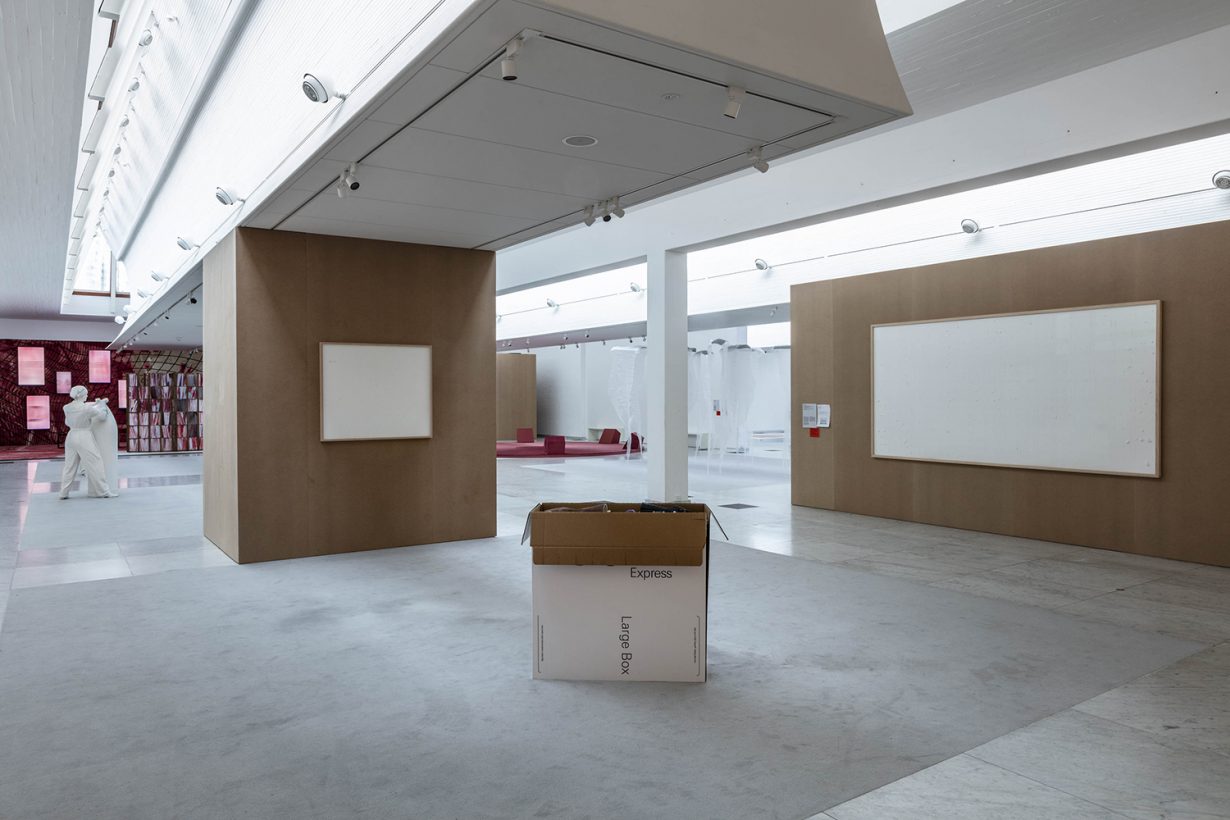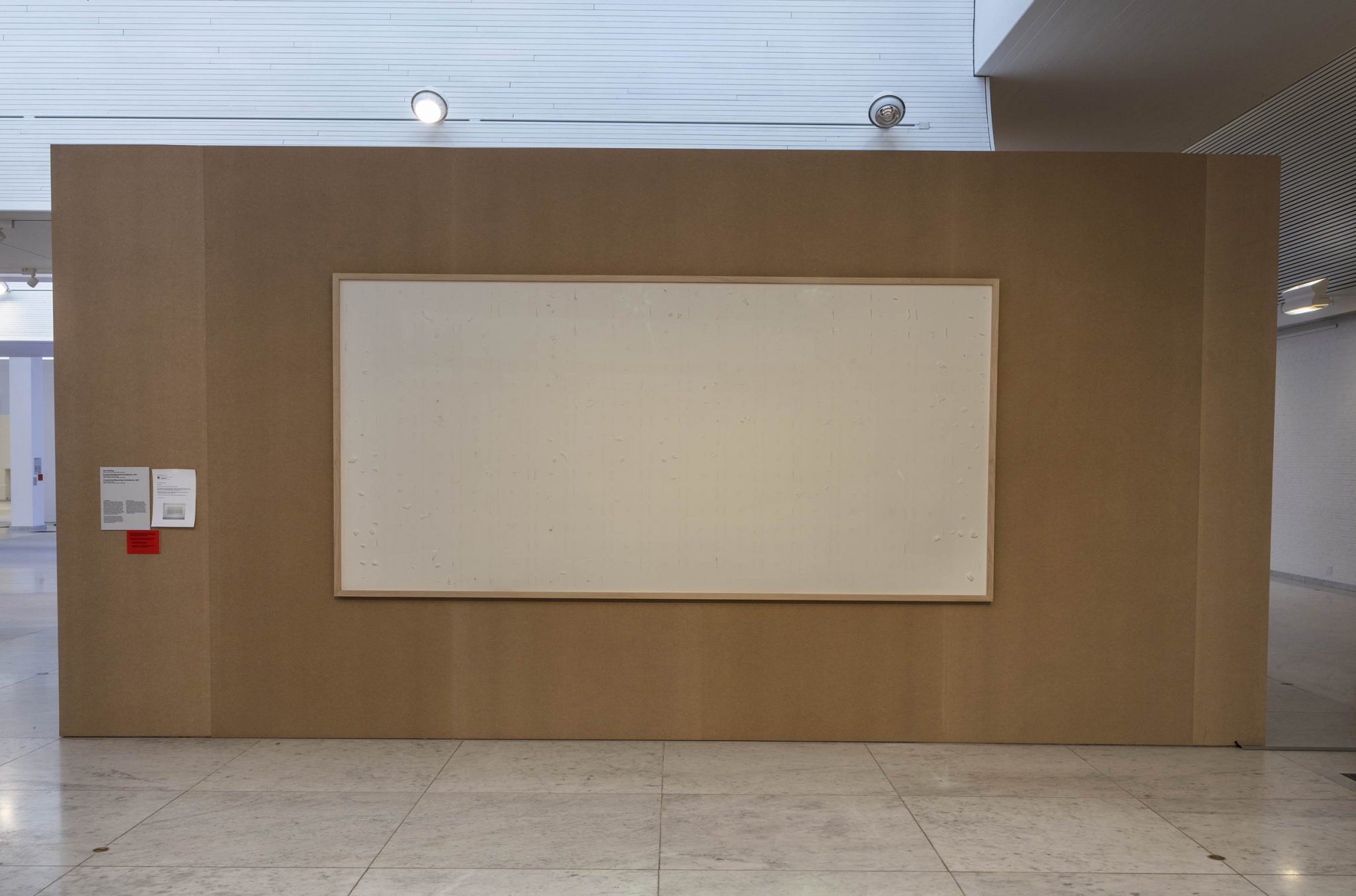It’s a little unclear how conceptual artist Jens Haaning’s decision to rip off a small Danish museum is a strike back against the financial oligarchy
The mainstream news cycle is forever doomed to be graced by sensational stories about art and money. Earlier this year it was the rapid rise of NFTs and the speculative frenzy they encouraged, leading some overeager commentators to pronounce a revolution in the art market. In 2018, there was widespread delight when, at auction, a Banksy piece, Girl with Balloon (2006), self-destructed after selling for $1.4m (the shredded artwork is up for resale on 14 October, now valued at six times the original price). The previous year, there was the scandal around the sale of Salvator Mundi, attributed to Leonardo da Vinci, for $450m to a shady network of collectors and institutions aligned with Saudi Arabia’s notorious crown prince Mohammed Bin Salman (he, of bone saw fame), who allegedly secreted it away on his yacht.
This past week, the headlines have focused on a gag by Danish conceptual artist Jens Haaning who, in return for a fee of roughly $84,000, supplied two empty frames to the Kunsten Museum of Modern Art in the city of Aalborg, Denmark, and titled it Take the Money and Run (2021). The museum had originally commissioned Haaning to recreate two of his artworks for a show about the future of work: An Average Danish Annual Income (2010) and An Average Austrian Annual Income (2007). In both pieces, the artist arranges the titular sum in large denomination bills of respective currency, displayed in a grid on a framed blank canvas. Two days before the exhibition was due to open, Haaning informed the museum that, in contravention of the contract, he was instead providing them with a new work in which the frames appeared empty. The banknotes were nowhere to be seen.
“The work is that I have taken their money,” Haaning informed Danish radio. “It’s not theft. It is breach of contract, and breach of contract is part of the work.” The museum seems to feel otherwise and has suggested it may pursue legal action; it had paid him around $3,900, alongside fronting the money to be displayed (Haaning claims that recreating the work would put him out of pocket – which the museum disputes). Perhaps reflecting on the imbalance of what Marx called dead labour (the money) over living labour (the artist), Haaning issued a stirring call to arms: “I encourage other people who have working conditions as miserable as mine to do the same. If they’re sitting in some shitty job and not getting paid, and are actually being asked to pay money to go to work, then grab what you can and beat it.”
I entirely agree with Haaning: workers should expropriate their expropriators, preferably en masse (this has been the intention of trade unions and worker-led socialist parties for the past century and a half). Haaning’s work arrives 40 years into a neoliberal revolution so transformative that, indeed, today many precarious workers (especially the young or those from migrant backgrounds) are either working for free (internships) or essentially paying to work in the treadmill of the ‘gig economy.’ This is especially so for labour in the arts, which, as Gregory Sholette argues, depends on a vast, unseen, unpaid ‘dark matter’ within which only a few stars are allowed to shine (and get paid).
Haaning’s stunt begs deeper questions, and they go well beyond the cynical retort that perhaps he and the museum cooked up the scheme as a way to attract publicity or even pump up the value of the work (something the latter denies). It forces us to ask whether artists are indeed workers under capitalism and what the political consequences might be either way. This is a subject explored in a wave of recent books by Dave Beech, Marina Vishmidt and Leigh Claire La Berge, as well as in my own Art After Money, Money After Art: Creative Strategies Against Financialization (2018). All agree that, over the last 20 years, the theme of the artists’ labour and their relationship to public and private institutions and markets has become a key concern for many critical artists, generating a large body of work that helps us puzzle out the transformations of capitalism in our age. But can an artwork that reflects on the relationship between art and capitalism actually have any meaningful political impact in the world beyond the gallery?

I would argue that our perennial fascination with artworks about money stems from the way these two social constructs – art and money – are only sustained by the myth of their mutual opposition. In a disenchanted, alienating capitalist world, we project onto art the qualities of transcendental and spiritual truth and autonomy. And, conversely, our beliefs about money as a hard-and-fast, profane and logical thing in some way depend on art being held up as its foil. In short: art is art because it’s not money, and vice versa.
But as the French sociologist and philosopher Pierre Bourdieu among others has shown, ‘art’ as we know it (as distinct from craft, sacred imagery, costume and ornament) only really comes into being under capitalism in the seventeenth and eighteenth centuries, as the moneyed classes begin to create a demand for unique objects to own as a store of not only economic capital but also social and cultural capital. And money has, in spite of the ideology of mainstream economics, never been a pure and true medium of commerce either: it is, as anthropologist David Graeber’s work has demonstrated, a dense field of power relations, meaning-making and cultural exchange.
The last 40 years have seen artists seek to unpack these relations. The ‘conceptual turn’ during the 1970s and several other ‘turns’ afterwards have been motivated by attempts to allow art to escape money’s grasp by refusing to create objects that can be commodified. But at the same time, money, too, has become more conceptual, with new forms of immaterial financial assets (familiar from the 2008 meltdown) coming to rule and with neoliberalism infiltrating nearly all social institutions and forms of life in some way.
The fabricated tension between art and money still gives us that frisson every few months when a work like Haaning’s makes headlines. And yet more is at stake than the titillation of seeing art and money in scandalous proximity.
We love to see the art market – the back-slapping playground of the super-rich – get its comeuppance. That said, it’s unclear how Haaning’s ripping off of a small Danish museum seeking to create a critical exhibition about the future of work strikes back against the world’s financial oligarchy. The implicit association of the evils of the capitalist system and its chronic exploitation of artists and other workers within a nebulous ‘artworld’ risks contributing to a by-now widespread ‘anti-elitist’ sentiment, that swings both left and right, but increasingly right. Here, a pompous and effete ‘cultural elite’ stands in for an economic ruling class, a target of misdirected if completely justified anger. With increasing regularity, rightwing politicians mobilise antipathy to ‘cultural elites’ precisely to attack those elements of arts institutions that have become (for better and for worse) platforms for anti-racism, anti-colonialism and experiments in new ways to organise politically.
As a work of institutional critique, Haaning’s Take the Money and Run feels of another time, more of a piece with the late-twentieth century manoeuvres of Chris Burden, the KLF or the notorious money trickster and artworld outsider J.S.G. Boggs. Today, most radical artists concerned with the intersection of art and money have opted for decidedly more aggressive and activist tactics. Consider the theatrical and direct actions of Liberate Tate in London or Decolonize This Place, Occupy Museums or StrikeMoMA in New York who, in different ways, have taken aim at the financial and corporate sponsors of major arts institutions – not only to make a critique of the relationship between art and money but also to build solidarity and alliances among artists, workers and campaigners around the world.
I am not one to argue that all political or critical art must become activism, and I have an admiration for the power of spectacle, which Haaning has mobilised with great flair and some daring. But I am curious how his intervention moves us any closer towards a society in which the exploitation of labour (of which he implies he is a victim) is somehow lessened. Like Michael Marcovici’s 2009 limited edition artist book How I used Your Credit Card to Pay for this Book Online (where he did just that and sent the victim/beneficiary a copy) and Paolo Cirio’s 2020 Derivatives (in which he appropriated art images from auction houses’s websites and resold them as original works of art), Haaning here is working with artistic theft as a means to critique capitalist property relations. Such artists attempt to do so from within the cryptic space of ‘art’ that stands both outside but also, at the same time, very much within the economic and legal order of capitalism.
In recent years, some artists have turned towards a tendency most influentially expressed in the now-classic anti-capitalist book The Undercommons (2013), in which Fred Moten and Stefano Harney recommend a relationship of criminality towards capitalist cultural institutions that are, themselves, the beneficiaries of stolen cultural labour. In such artworks, which are typically carried out without fanfare, artists leverage their positionality to appropriate and redirect resources towards social movements and aligned groups, often with the complicity of curators and the museums themselves who are eager to help misappropriate funds from the state or from private donors. While much of this work, for obvious reasons, is reluctant to announce itself publicly, we might point to the work of Núria Güell (who among other things has used artist grants to create tax havens for anarchist movements), or Constantina Zavitsanos (who has used galleries as a way to give away money as a form of bottom-up social assistance). It is a mode of artmaking that provides an urgent counterpoint to Haaning’s one-liner.
Max Haiven is a writer, teacher and Canada Research Chair in Culture, Media and Social Justice at Lakehead University. His recent books include Art After Money, Money After Art: Creative Strategies Against Financialization (Pluto Press, 2018) and Revenge Capitalism: The Ghosts of Empire, the Demons of Capital, and the Settling of Unpayable Debts (Pluto Press, 2020).
